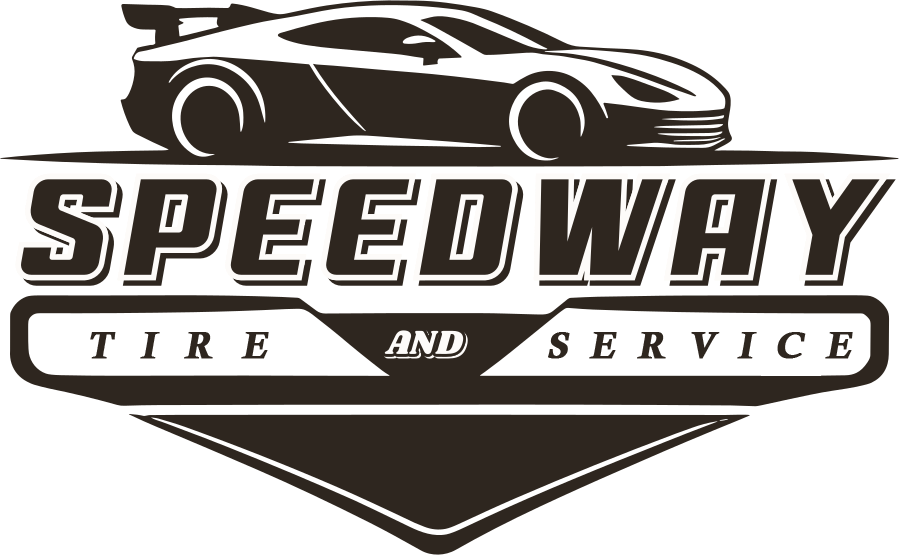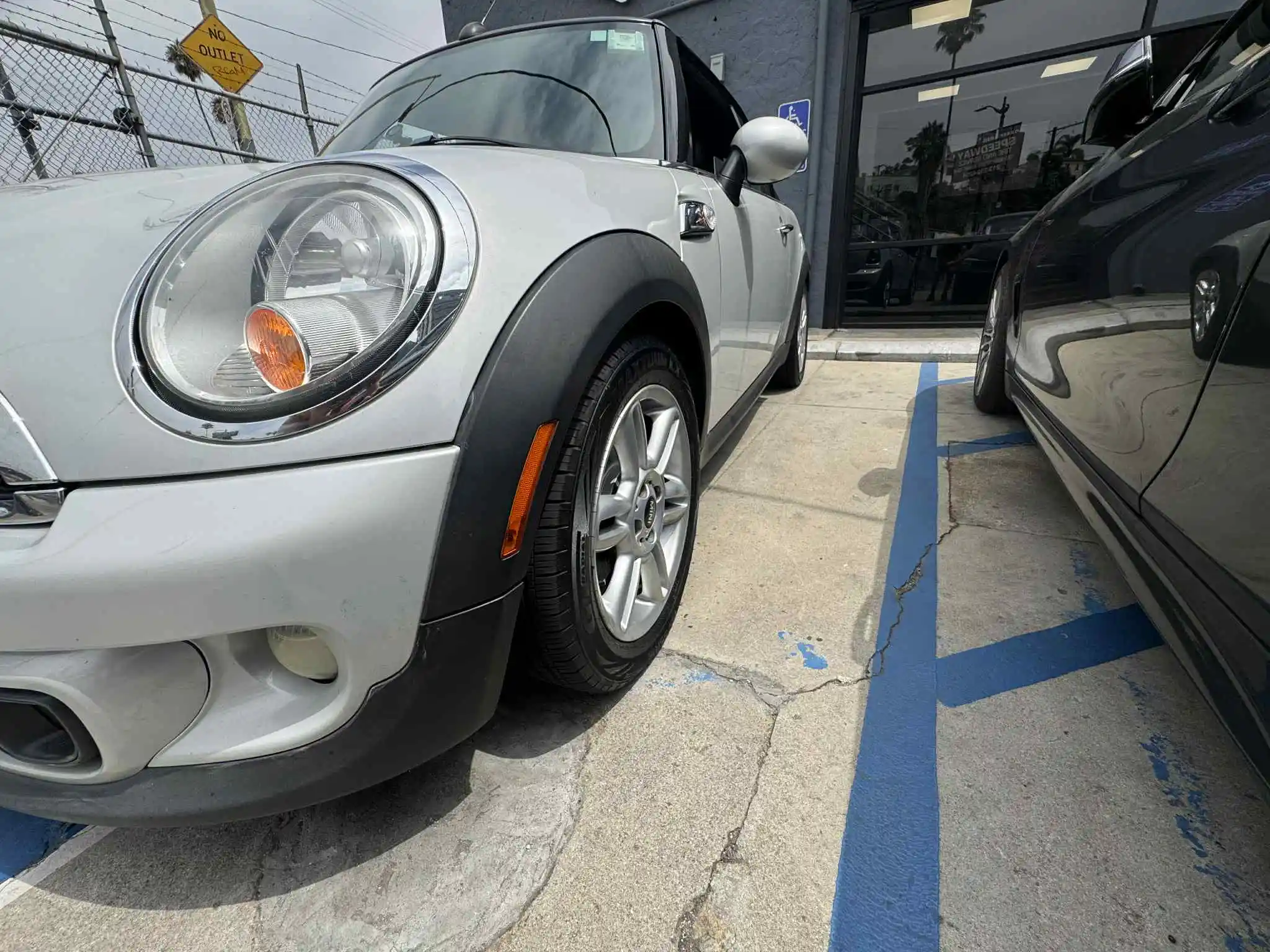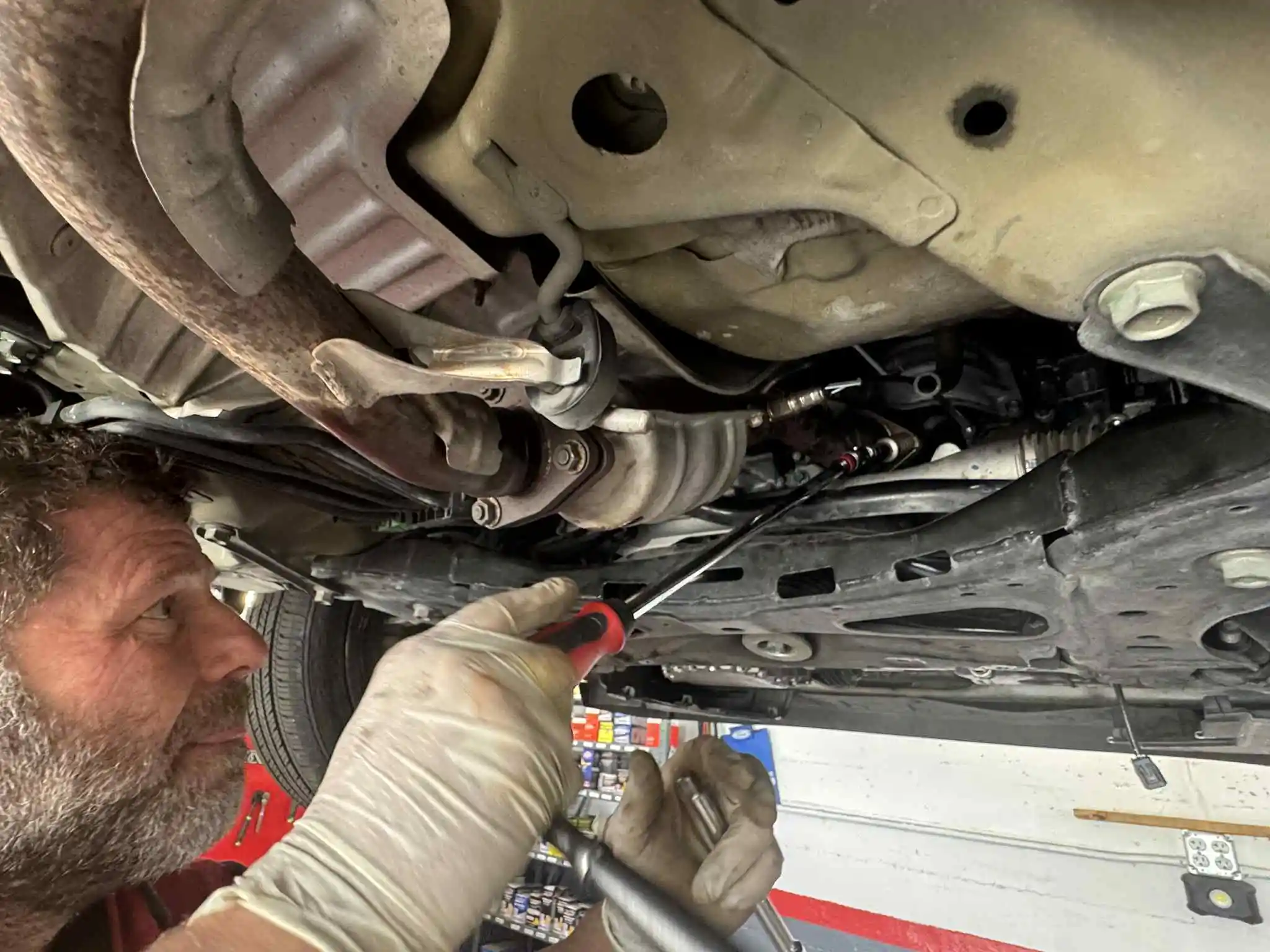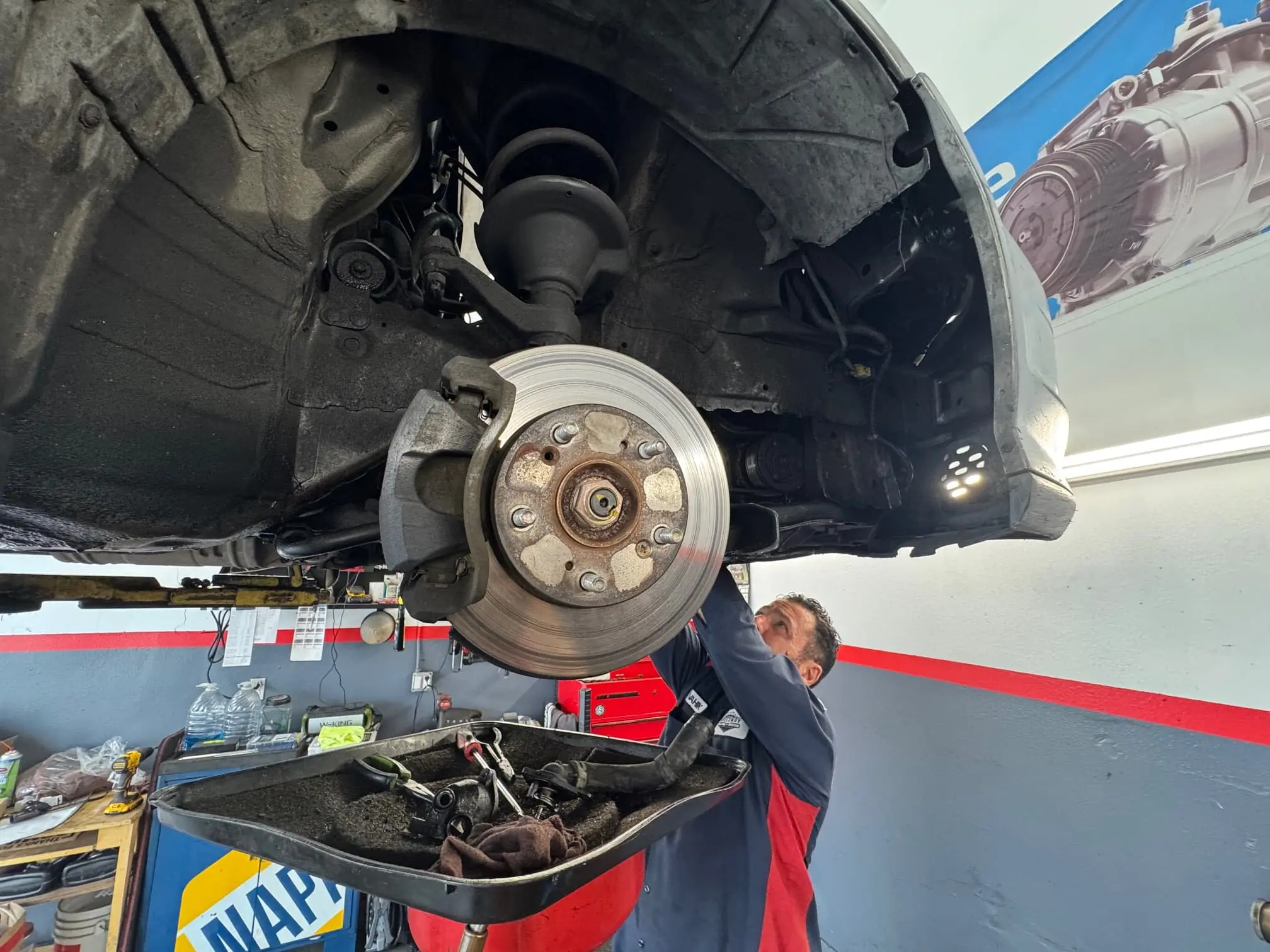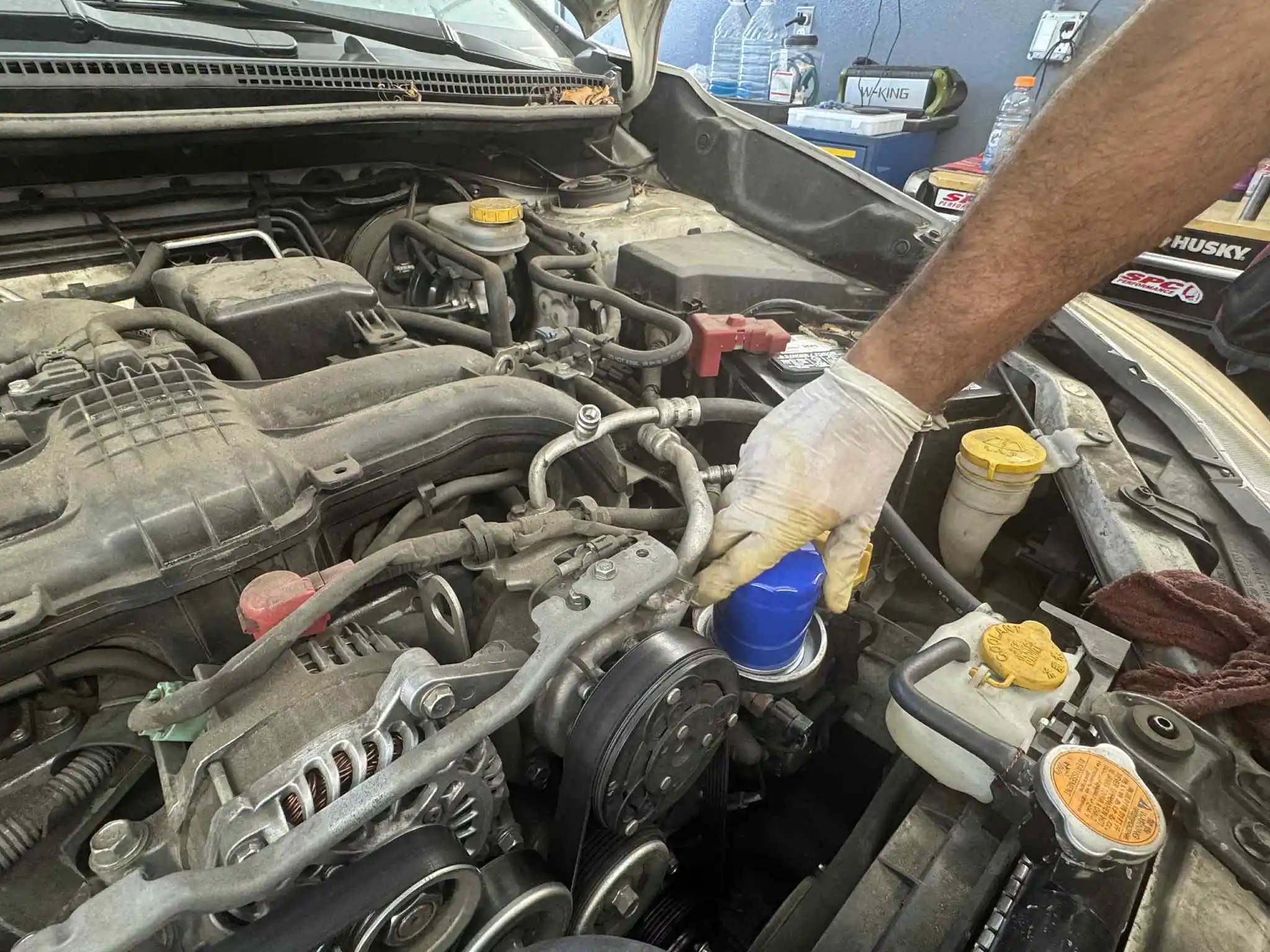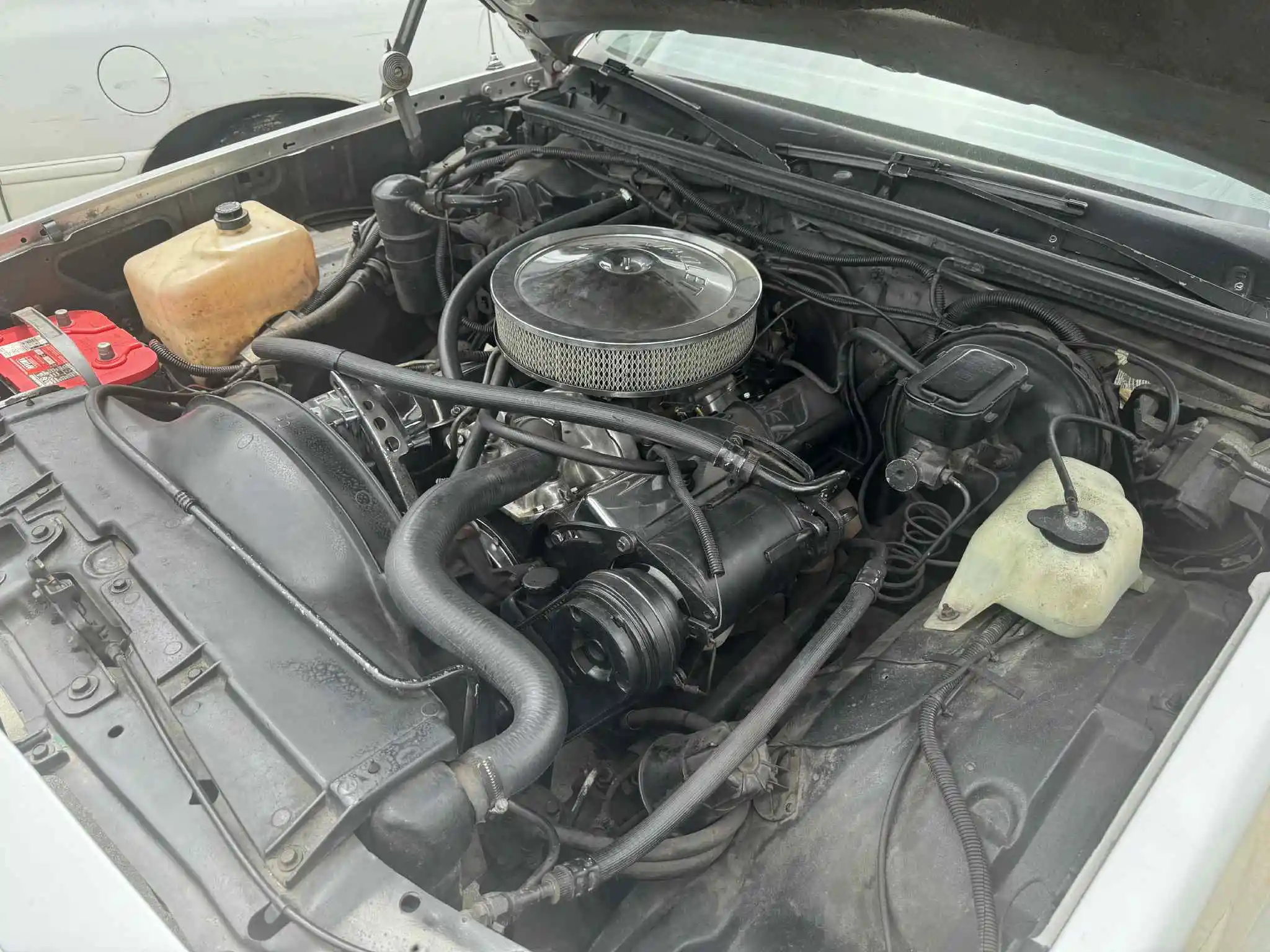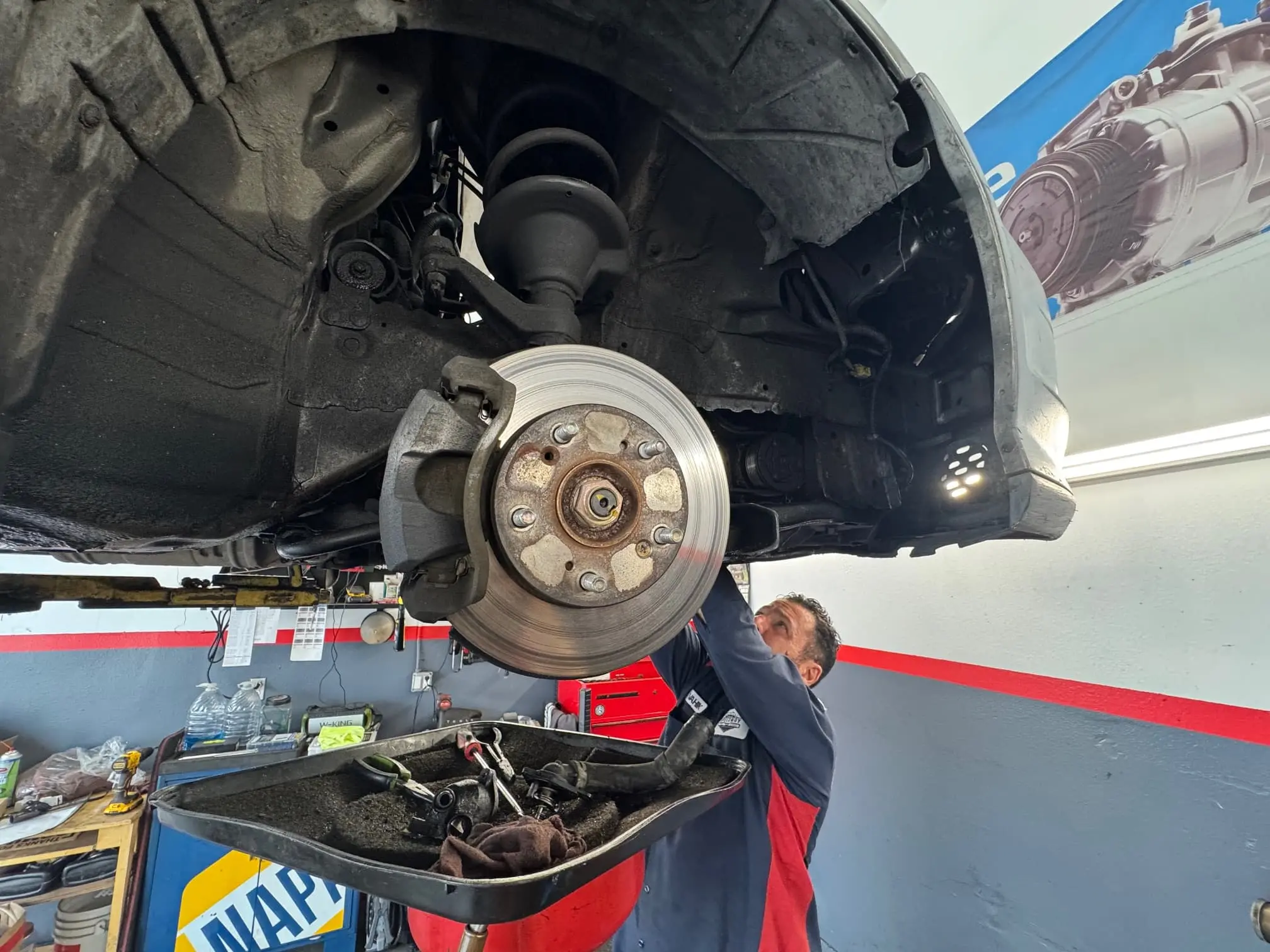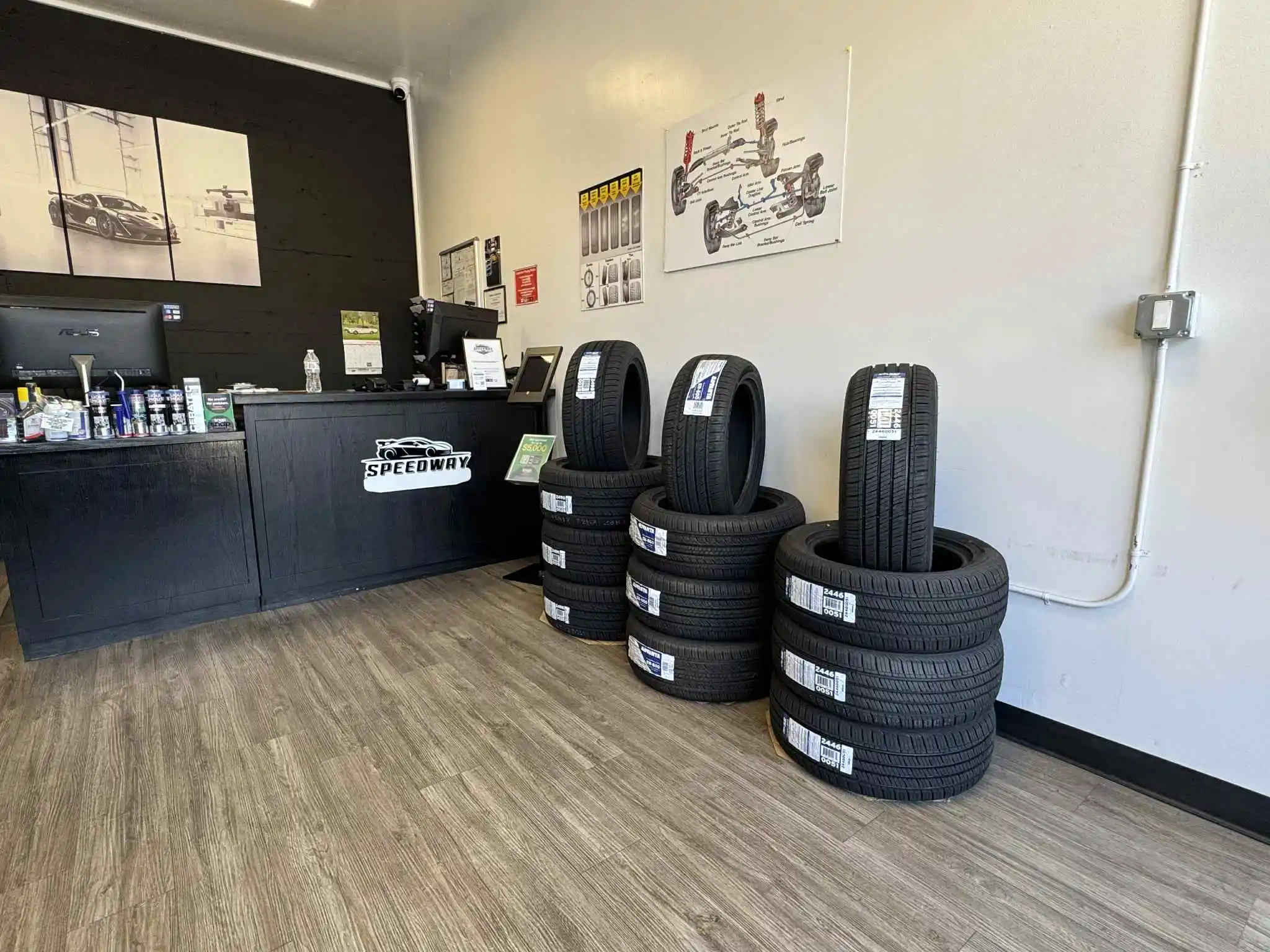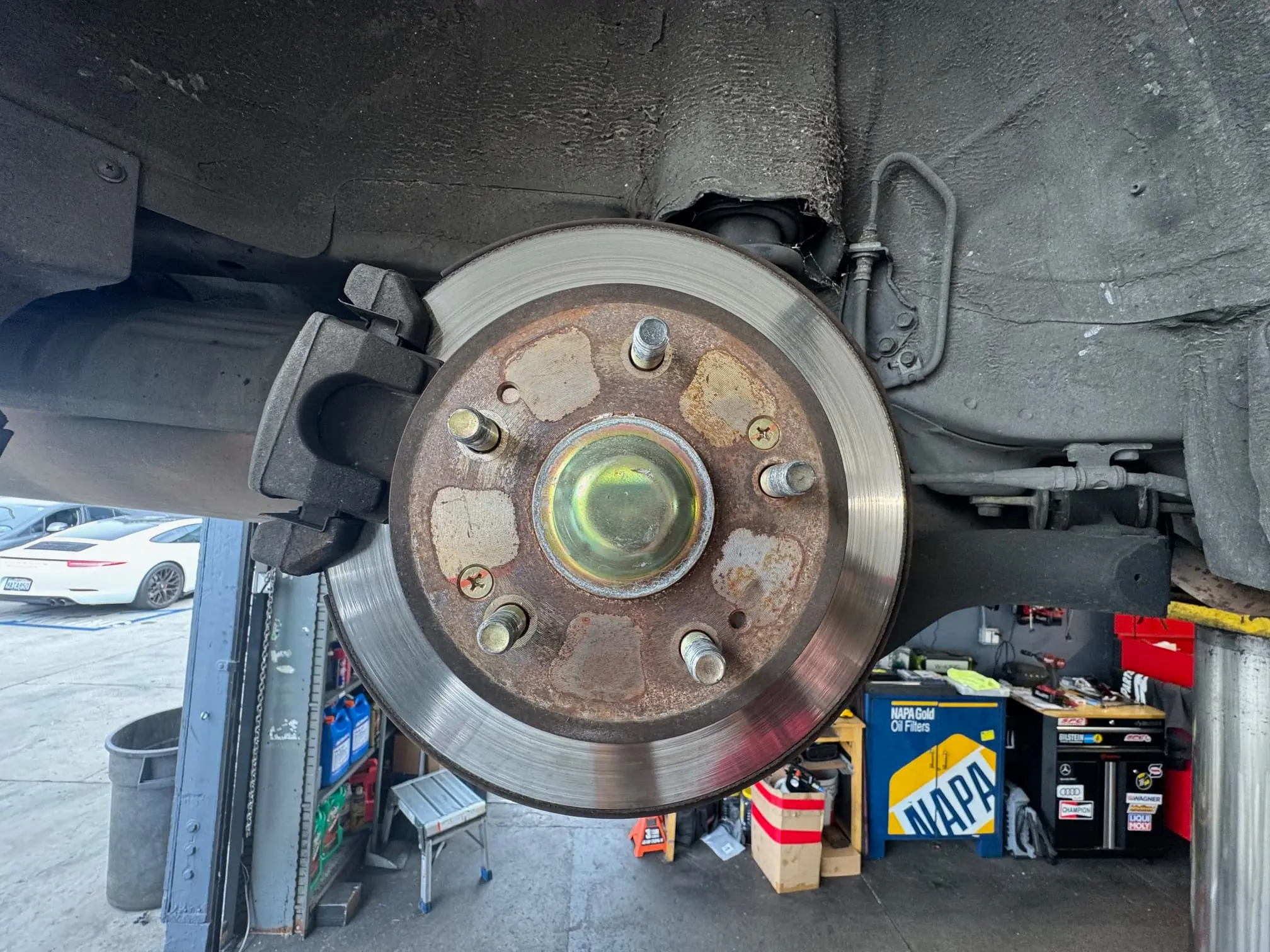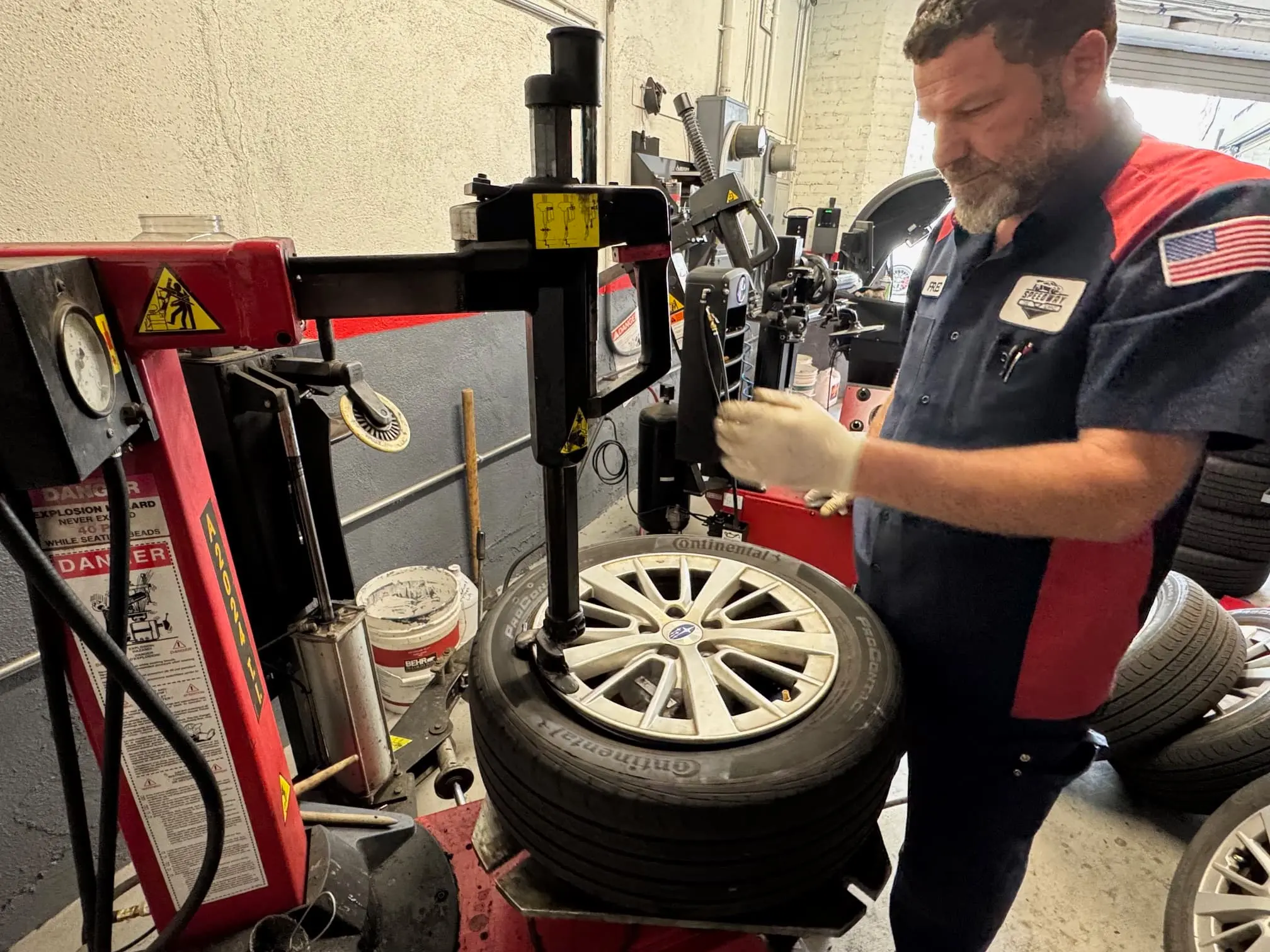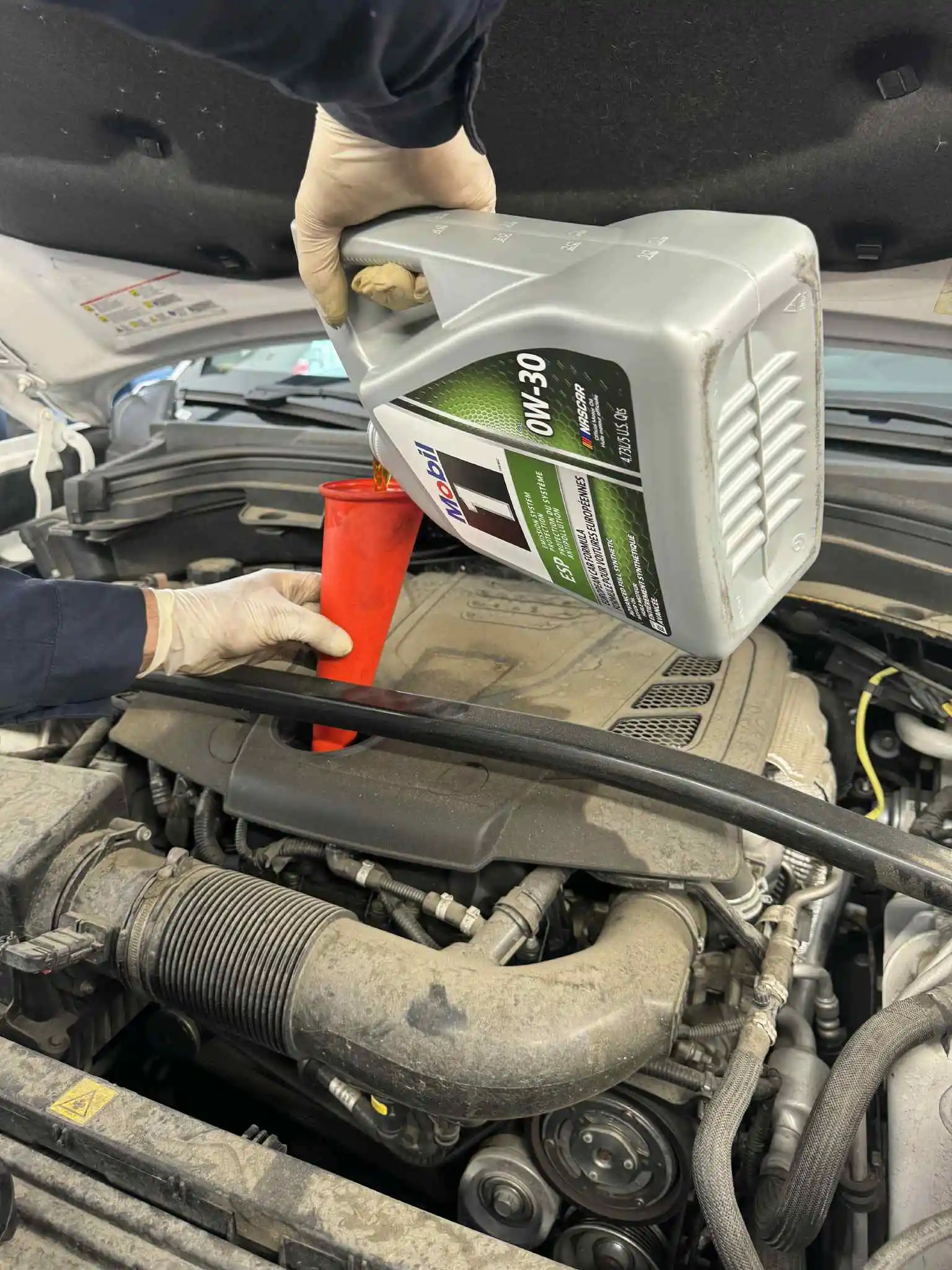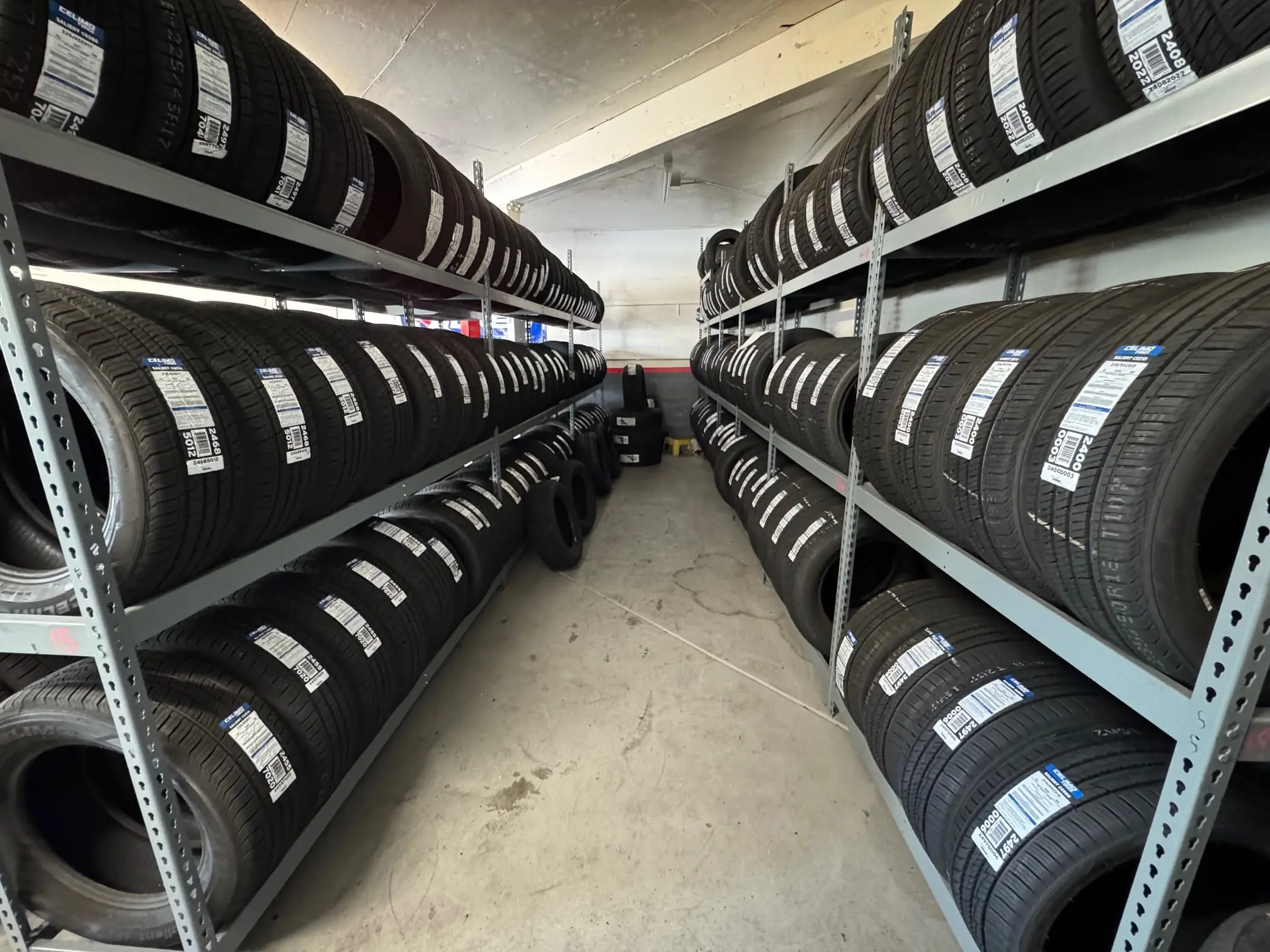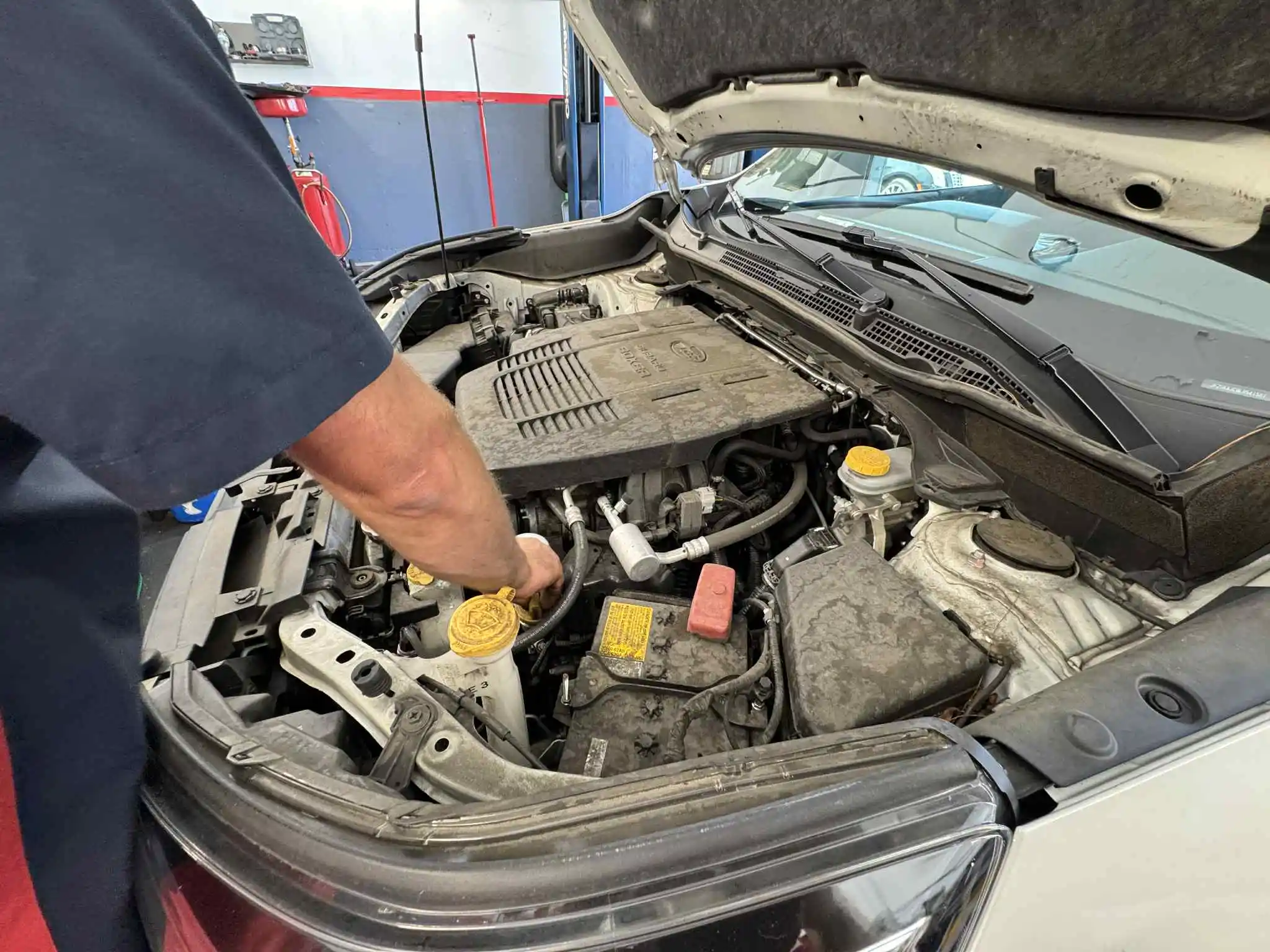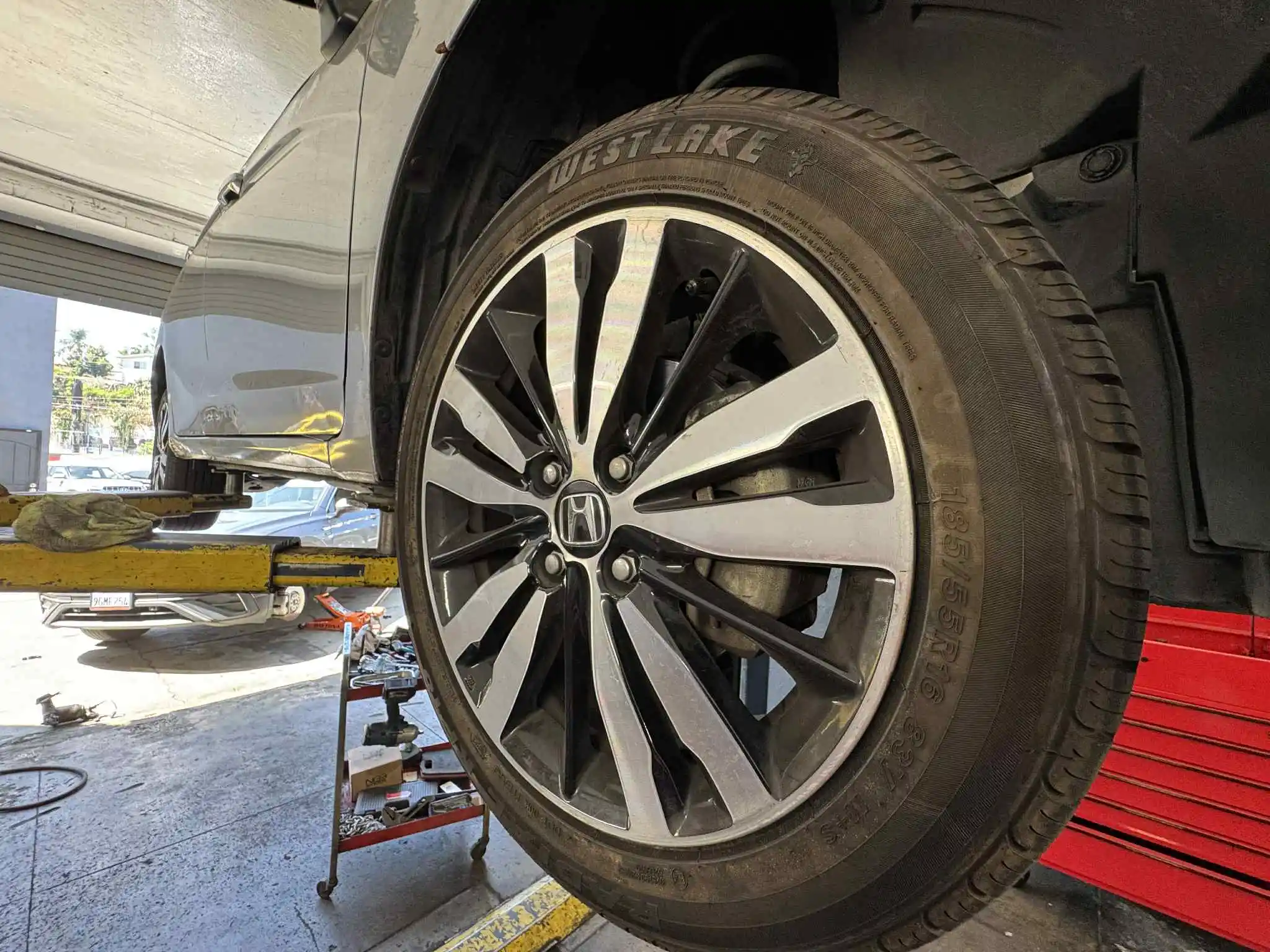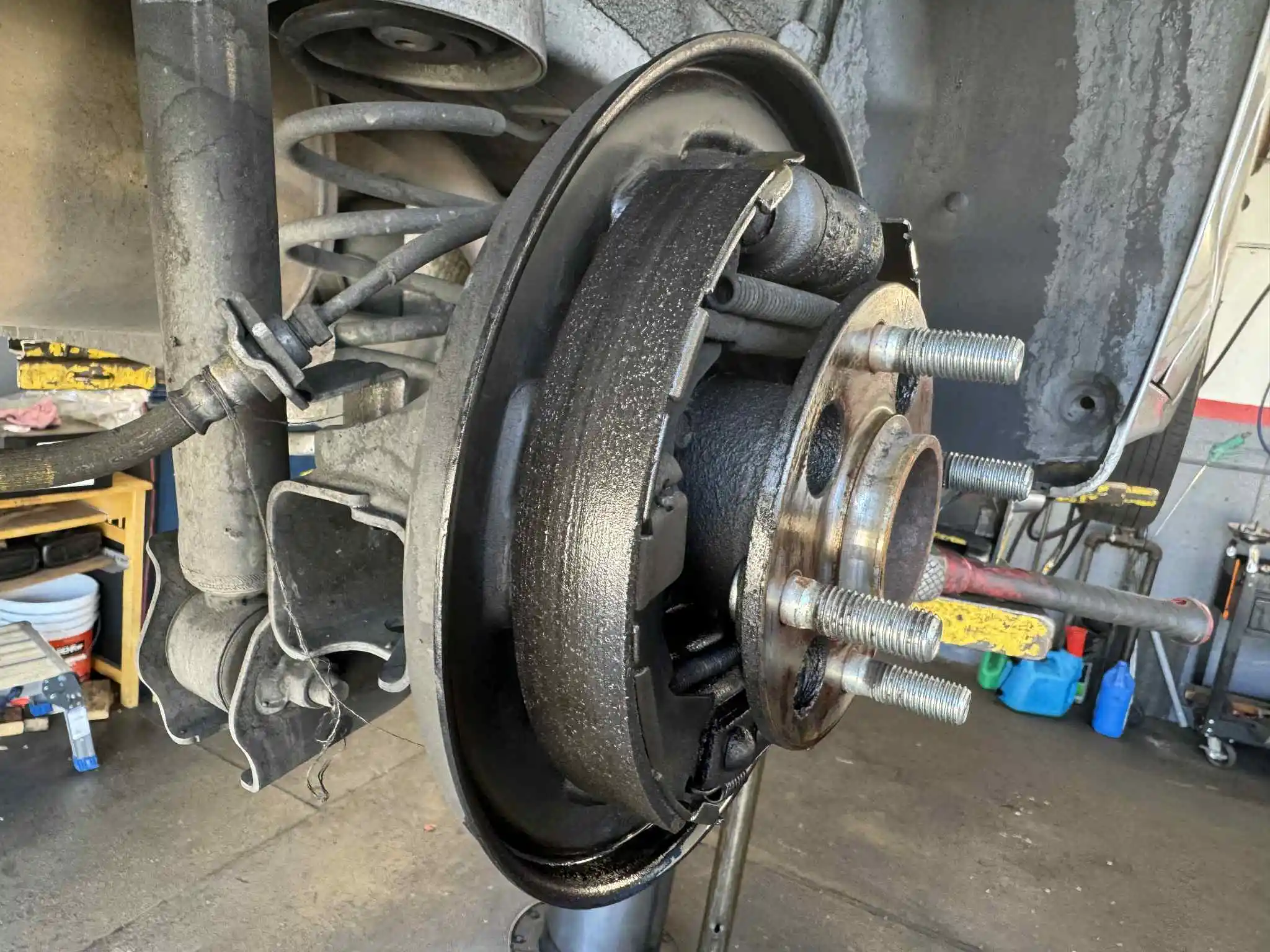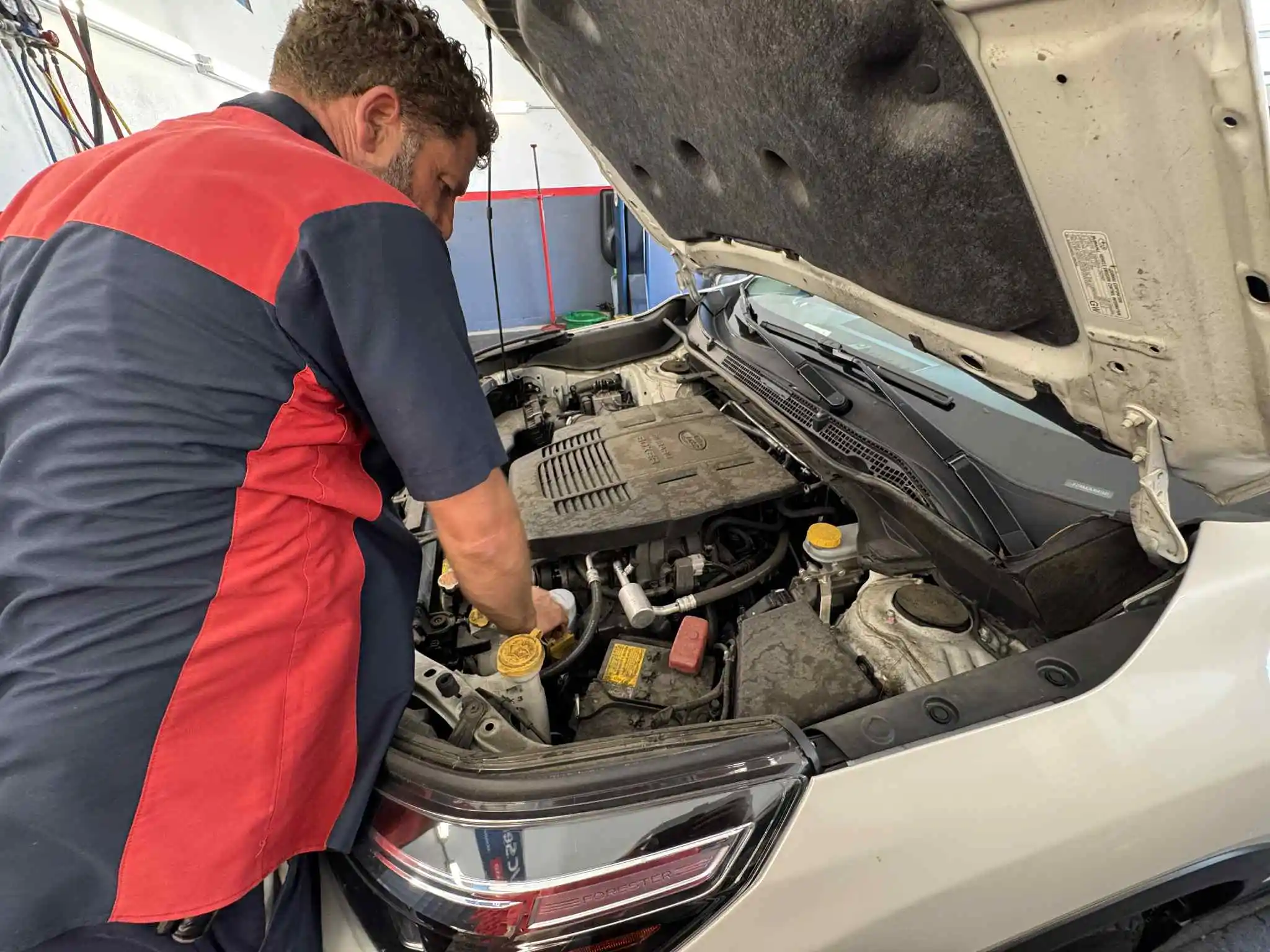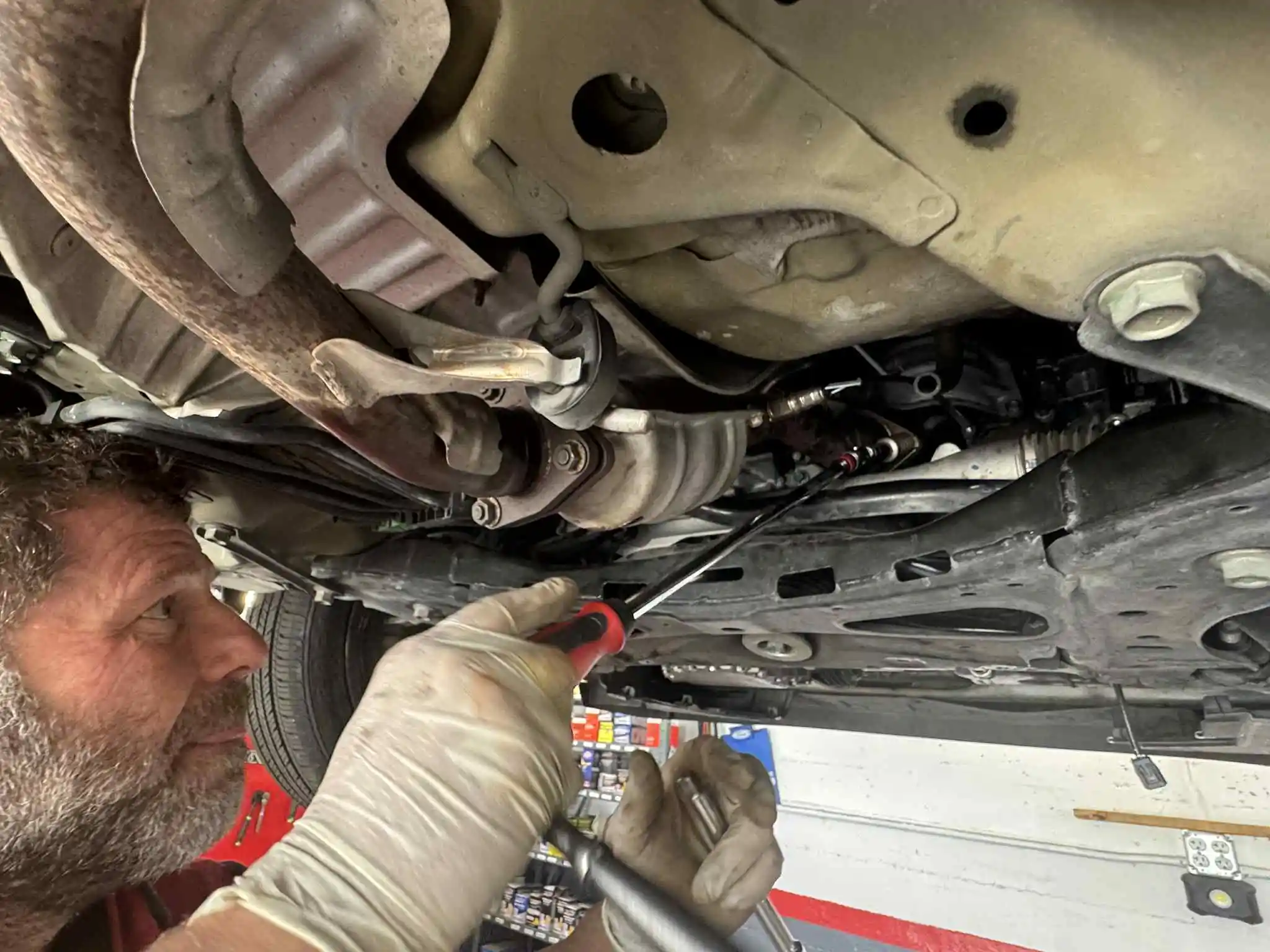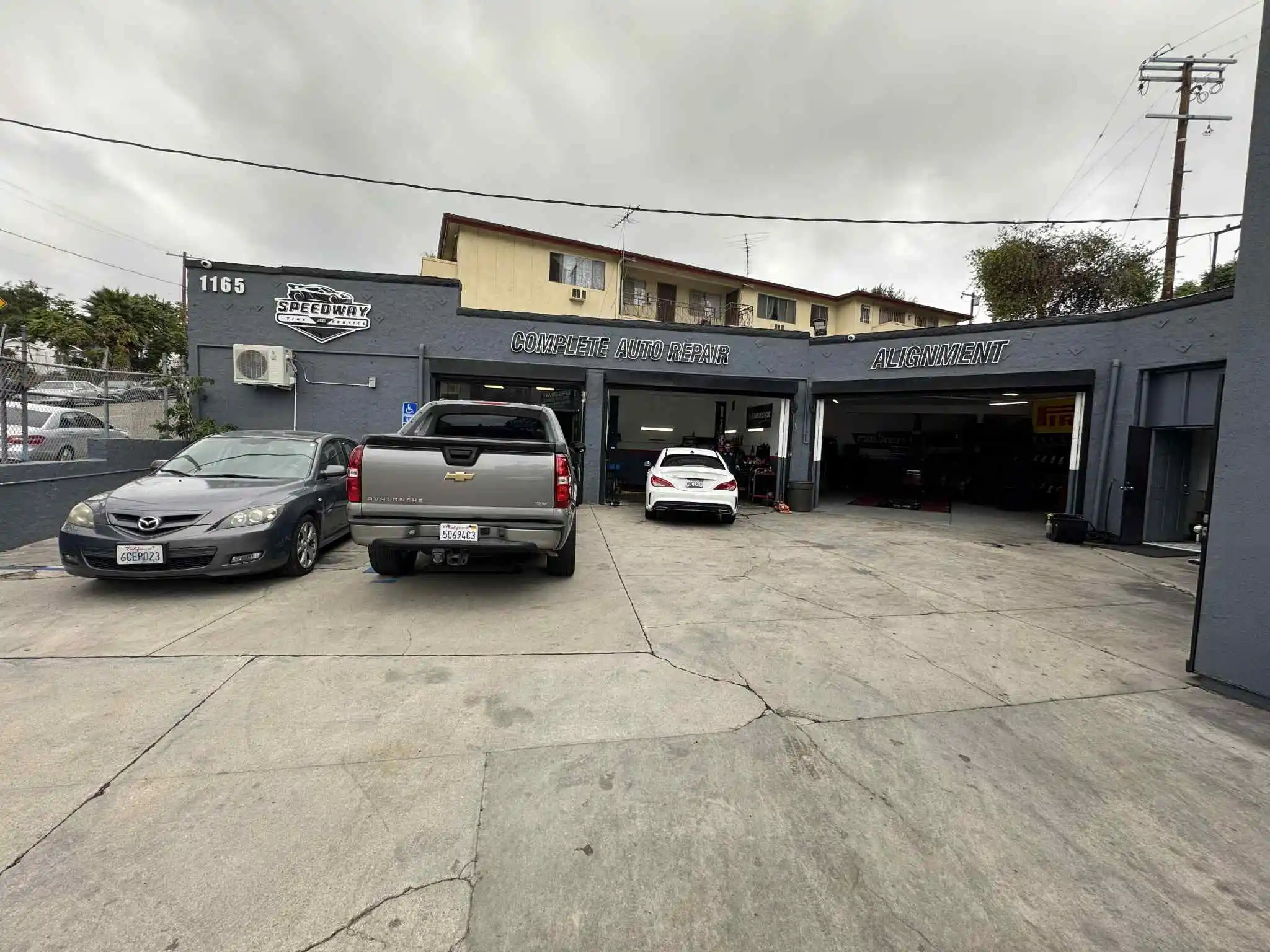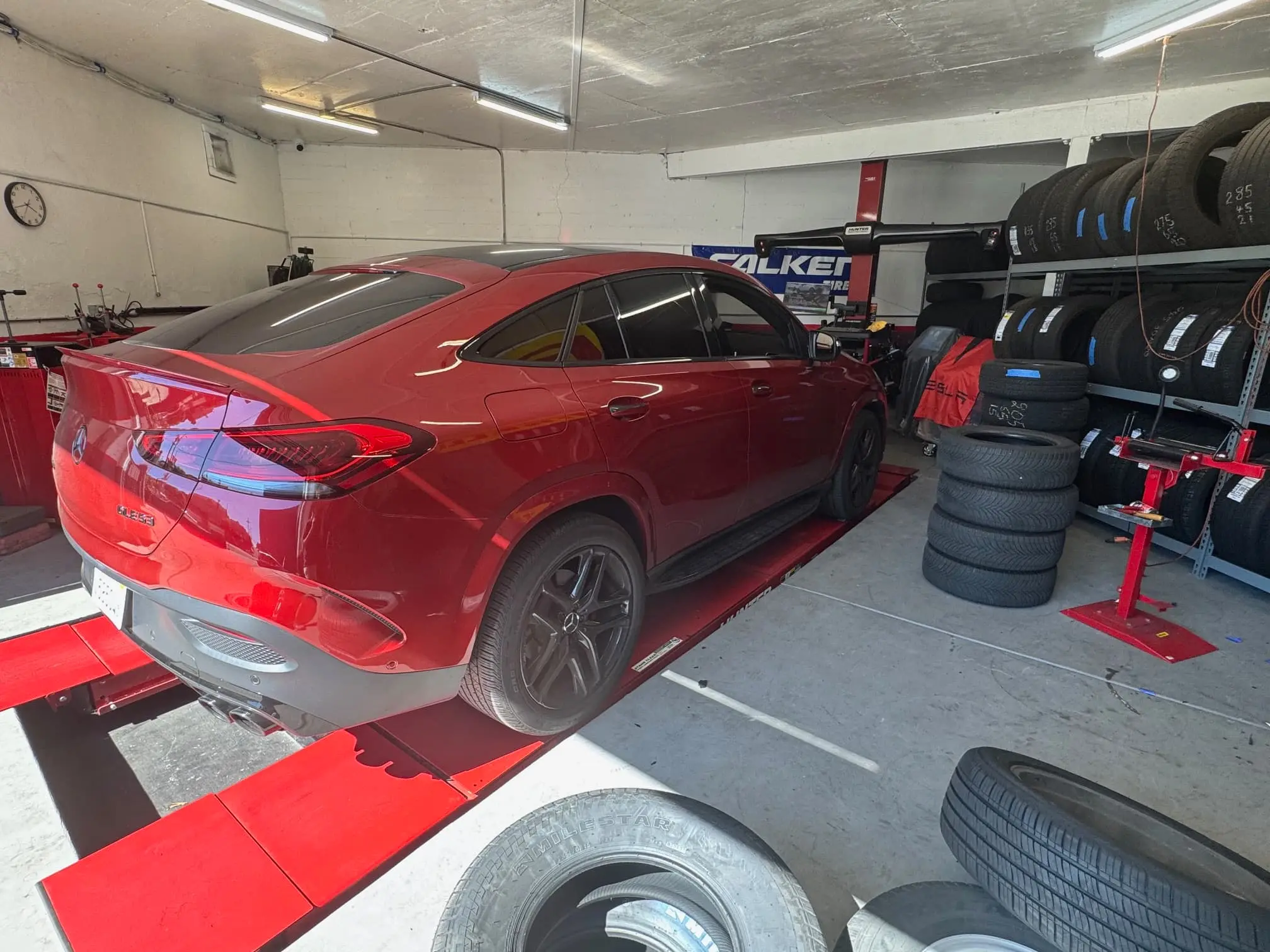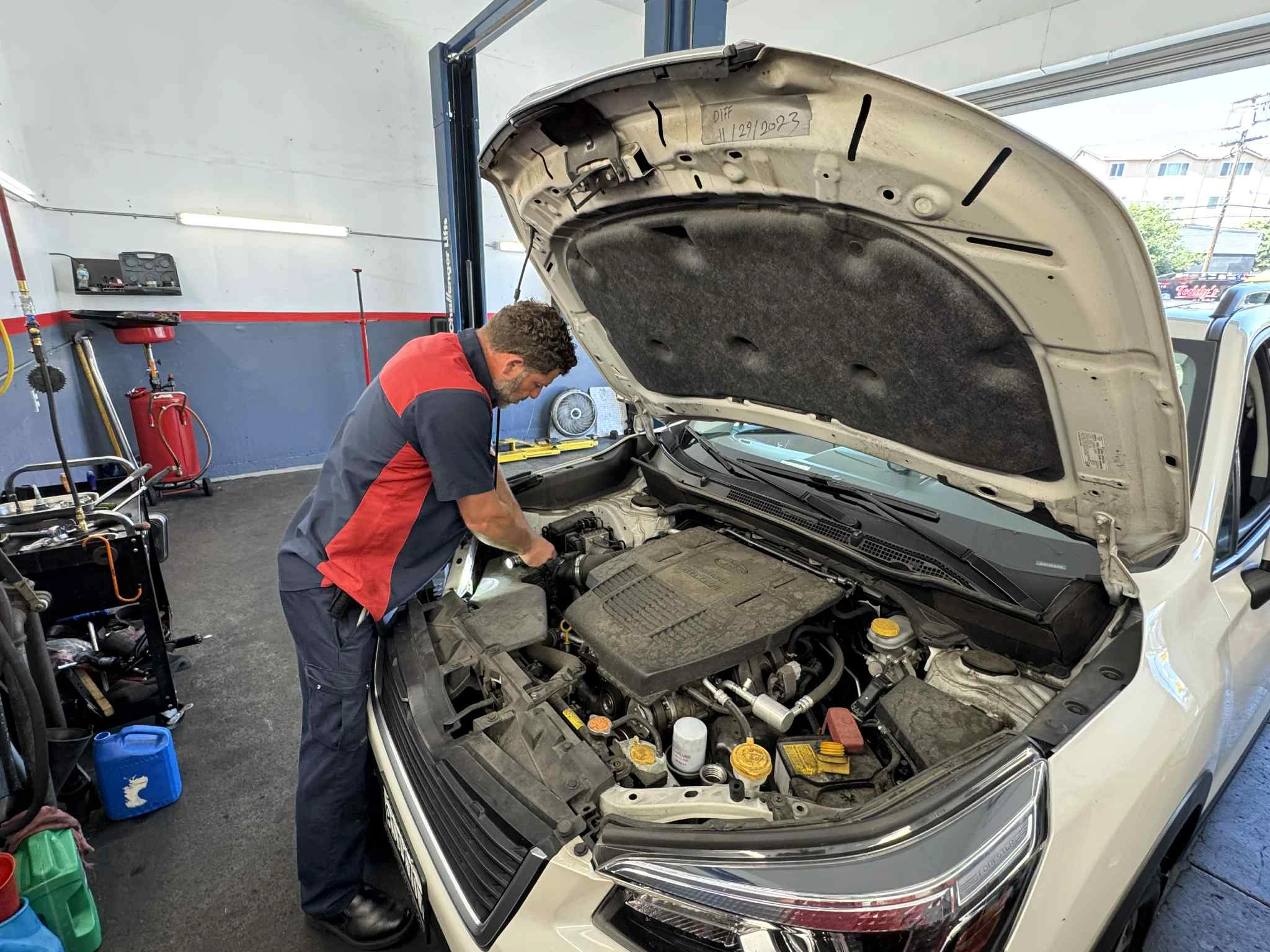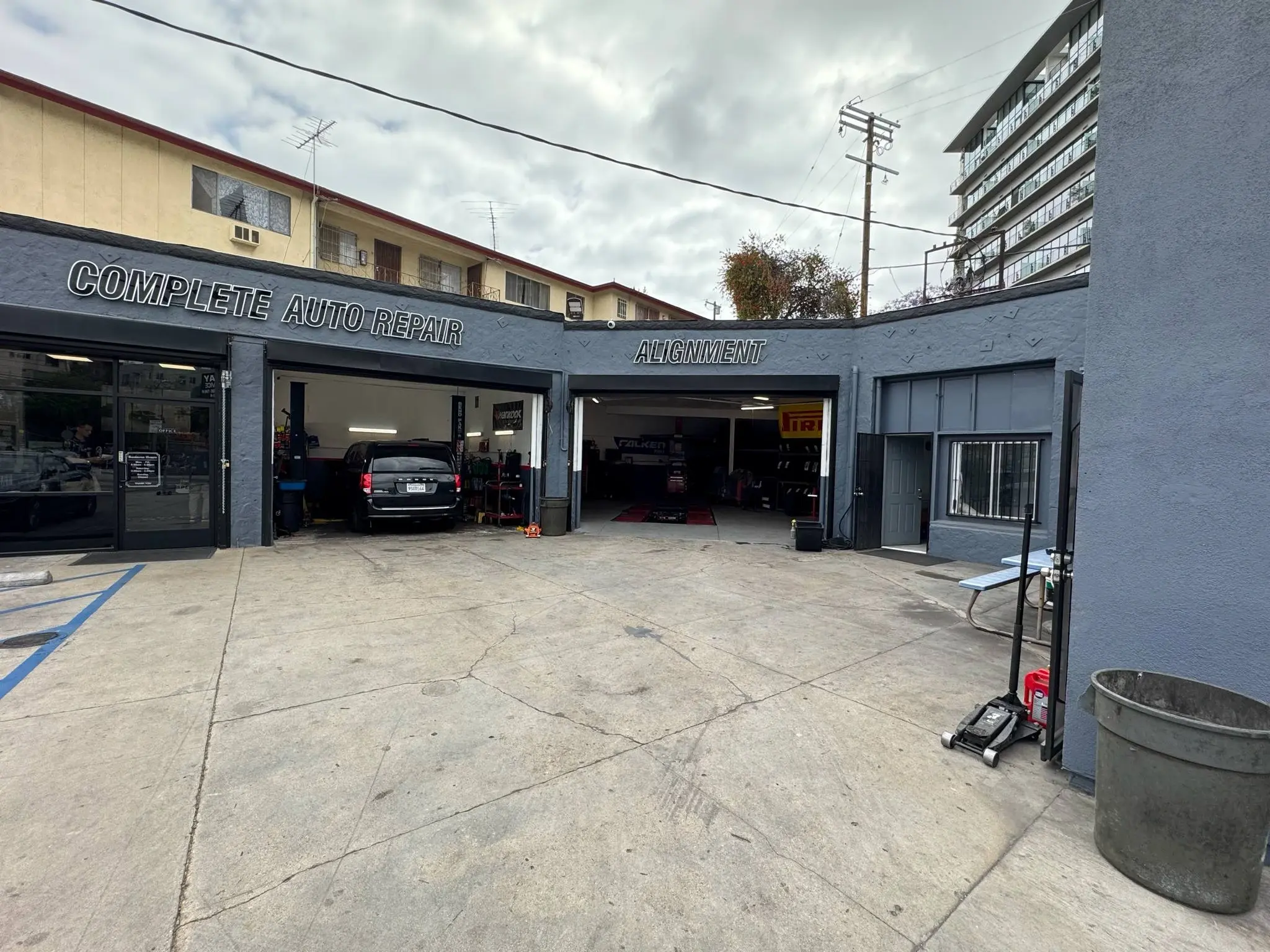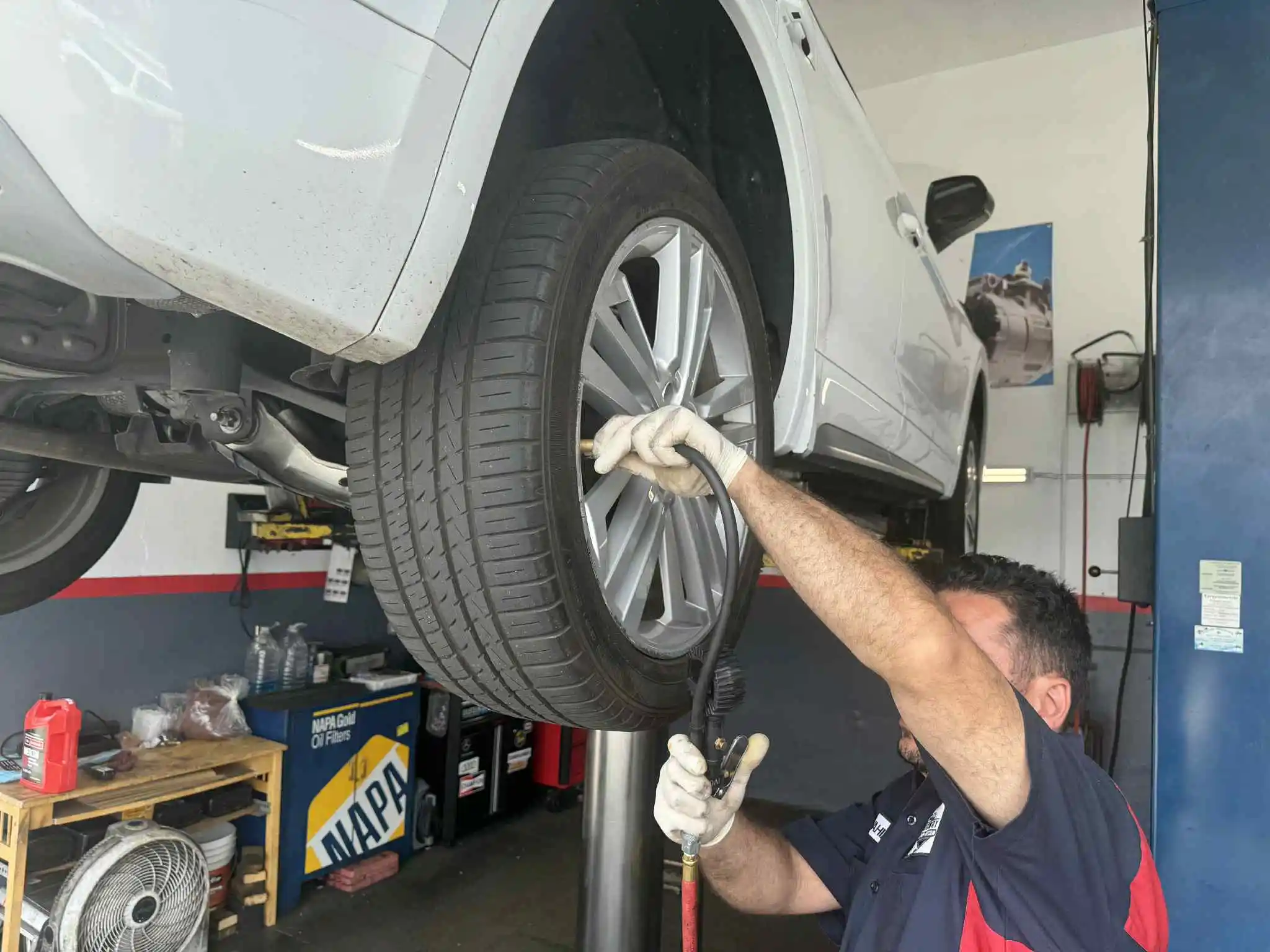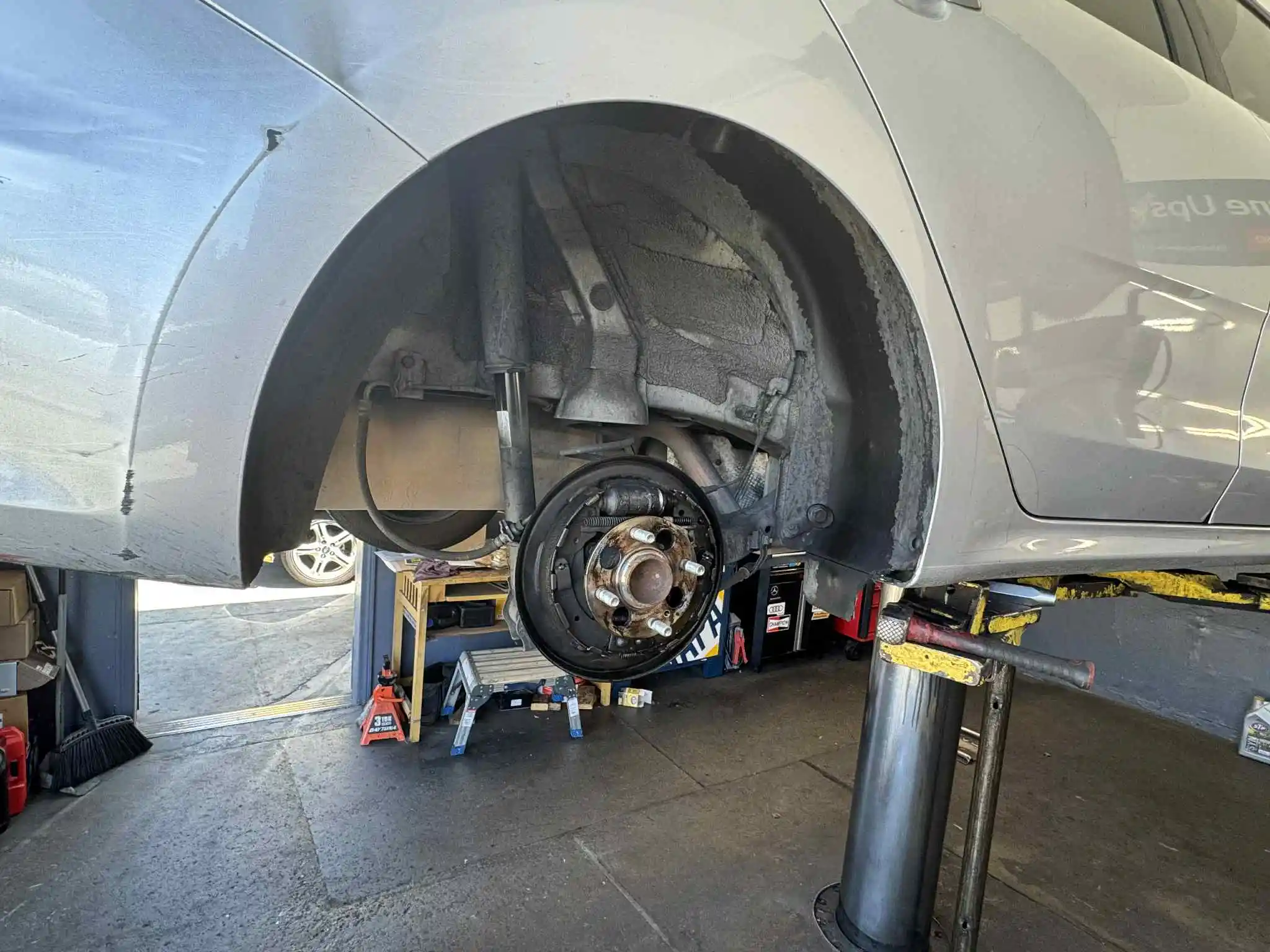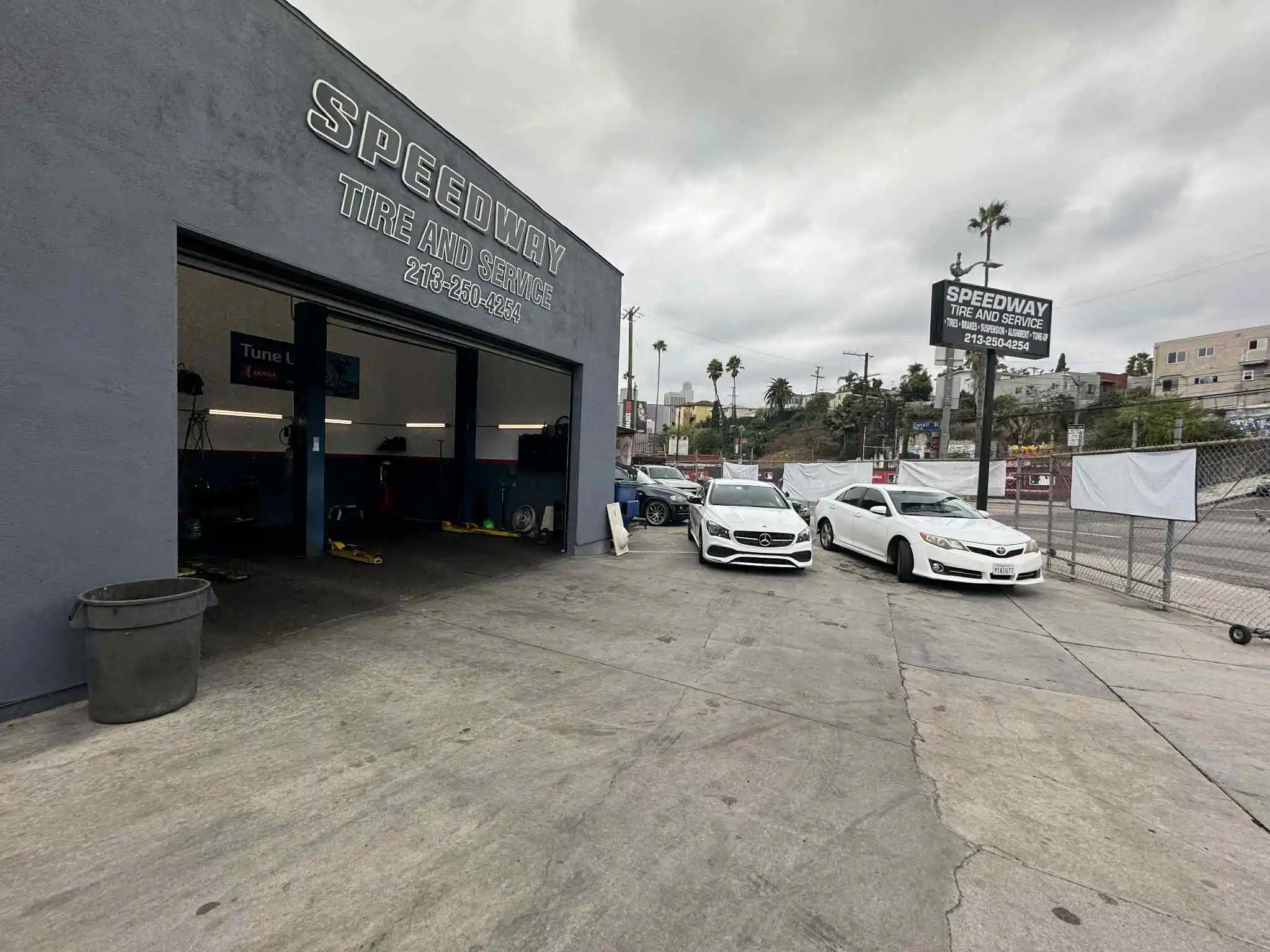Curb Rash on Your Wheels? Repair Options for Silver Lake Drivers
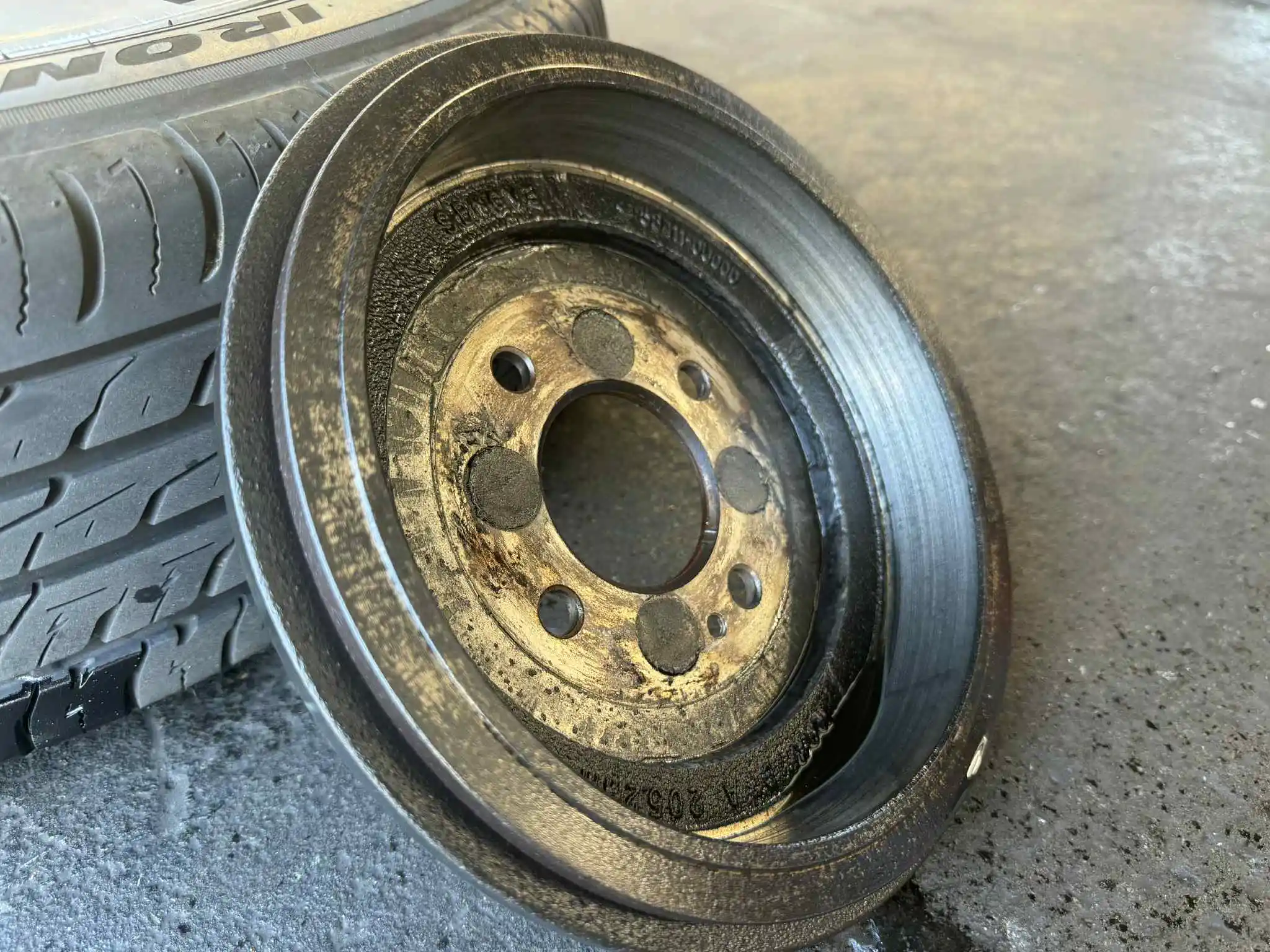
If you've ever misjudged a tight parking spot on Silver Lake's narrow streets or scraped your wheel against a curb while parallel parking on Sunset Boulevard, you're not alone. That distinctive grinding sound and the sinking feeling that follows are all too familiar to urban drivers. When you step out and see the damage—scraped, gouged, or scuffed aluminum along the edge of your wheel—you've just experienced what's commonly called "curb rash."
While it might seem like a minor cosmetic issue, curb rash repair is a decision that requires careful consideration. Not all wheel damage is created equal, and understanding the difference between cosmetic and structural damage can save you money, ensure your safety, and help you make the right repair choice for your Silver Lake driving needs.
What Exactly is Curb Rash?
Curb rash refers to the scrapes, scratches, gouges, and scuffs that occur when the outer edge of your wheel makes contact with a curb, parking barrier, or other obstacle. It's most common on the front wheels, particularly on the driver's side, where parking maneuvers bring the wheel closest to curbs.
Modern vehicles predominantly use alloy wheels made from aluminum or magnesium alloys. These wheels are lighter than traditional steel wheels, improve handling and fuel economy, and look significantly better. However, they're also softer and more susceptible to damage from impact.
Why Silver Lake Drivers Are Particularly Vulnerable
Silver Lake's unique urban landscape creates the perfect storm for curb rash:
Tight Parking Spaces: With limited street parking and narrow spots, drivers often push the limits when parallel parking, increasing the risk of wheel contact with curbs.
Hilly Terrain: Silver Lake's hills make it harder to judge distances when parking on an incline, leading to misjudged curb proximity.
Narrow Streets: Many of Silver Lake's charming residential streets were designed before modern vehicles became so wide, leaving little margin for error.
High Curbs: Some areas feature particularly high or aggressive curb designs that are less forgiving of minor parking miscalculations.
Nighttime Parking: Limited street lighting in some residential areas makes it difficult to see curbs clearly when parking after dark.
If you drive regularly in Silver Lake, curb rash isn't a matter of "if" but "when."
Cosmetic vs. Structural Damage: The Critical Distinction
Not all wheel damage is the same. Understanding whether your alloy wheel damage is cosmetic or structural is essential for making the right repair decision.
Cosmetic Damage: Surface-Level Issues
Cosmetic damage affects only the wheel's appearance, not its structural integrity or safety. This includes:
•Light Scratches: Superficial marks that haven't penetrated deeply into the metal
•Scuffs: Surface abrasions that remove the wheel's finish
•Minor Gouges: Small divots in the wheel's outer edge that don't compromise the rim structure
•Paint or Coating Damage: Chipped or scraped protective coating
Cosmetic damage is generally safe to drive on and can be repaired through refinishing processes. While it may look unsightly, it doesn't pose an immediate safety risk.
Structural Damage: Safety Concerns
Structural damage compromises the wheel's integrity and can be dangerous. This includes:
•Bends or Warping: When the wheel rim is no longer perfectly round, causing vibration or wobbling
•Cracks: Any crack in the wheel, no matter how small, is a serious structural issue
•Deep Gouges: Damage that penetrates significantly into the metal, weakening the structure
•Chunks Missing: Pieces of the wheel that have broken off
According to industry safety standards, wheels with structural damage should never be simply refinished. They require professional assessment and, in most cases, replacement. Driving on a structurally compromised wheel can lead to sudden tire deflation, loss of vehicle control, or complete wheel failure.
How to Assess Your Wheel Damage
Here's a simple evaluation you can perform:
Visual Inspection: Look closely at the damaged area. Is it just surface scratching, or can you see deep gouges? Are there any cracks radiating from the impact point?
Run Your Finger Across It: Gently feel the damaged area. If your finger catches on deep grooves or sharp edges, the damage may be more than cosmetic.
Check for Vibration: Drive your vehicle at various speeds. If you feel unusual vibration through the steering wheel, especially at highway speeds, the wheel may be bent.
Tire Pressure Test: Monitor the tire pressure on the damaged wheel. If it loses pressure faster than other tires, there may be a crack allowing air to escape.
Professional Inspection: When in doubt, have a qualified technician inspect the wheel. At Speedway Tire & Service, we provide thorough wheel inspections to determine whether damage is cosmetic or structural.
Curb Rash Repair Options for Silver Lake Drivers
Once you've determined that your wheel damage is cosmetic, you have several repair options, each with different costs, results, and timeframes.
Option 1: DIY Touch-Up Kits
What It Is: Over-the-counter kits containing sandpaper, filler, primer, and paint designed for minor wheel repairs.
Cost: $20-$50
Pros:
•Most affordable option
•Can be done at home
•Good for very minor scratches
Cons:
•Results are rarely professional-looking
•Color matching is difficult
•Doesn't address deeper damage
•May not last long
•Time-consuming and messy
Best For: Drivers on an extremely tight budget with minimal damage who aren't concerned about perfect aesthetics.
Option 2: Mobile Wheel Repair Services
What It Is: Technicians who come to your location to repair wheels using portable equipment.
Cost: $75-$150 per wheel
Pros:
•Convenient—they come to you
•Faster than taking your car to a shop
•Professional results
•Can handle moderate damage
Cons:
•Quality varies significantly between providers
•Limited equipment compared to shop-based services
•May not be able to handle severe damage
•Results depend heavily on technician skill
Best For: Busy professionals who value convenience and have moderate curb rash on one or two wheels.
Option 3: Professional Wheel Refinishing
What It Is: Comprehensive restoration performed at a specialized wheel repair facility.
Cost: $100-$200 per wheel
Pros:
•Highest quality results
•Wheels look like new
•Proper color matching
•Durable finish
•Can handle more significant cosmetic damage
Cons:
•Most expensive option
•Requires leaving your vehicle or removing wheels
•Takes longer (usually 1-3 days)
Best For: Drivers who want the best results, have significant cosmetic damage, or are preparing to sell their vehicle.
Option 4: Wheel Replacement
What It Is: Installing a new or used wheel to replace the damaged one.
Cost: $150-$500+ per wheel (depending on wheel type and whether it's OEM or aftermarket)
Pros:
•Guaranteed perfect condition
•Required for structural damage
•May be necessary if refinishing isn't possible
Cons:
•Most expensive option
•May require purchasing multiple wheels to ensure matching
•OEM wheels can be very expensive
Best For: Wheels with structural damage, severely damaged wheels that can't be refinished, or when insurance is covering the cost.
The Refinishing Process: What to Expect
Professional refinishing is the most popular option for addressing curb rash because it offers the best balance of quality and cost. Here's what the process typically involves:
Step 1: Inspection and Assessment
A qualified technician examines the wheel to confirm the damage is cosmetic and safe to repair. Any structural issues will be identified at this stage.
Step 2: Wheel Removal and Cleaning
The wheel is removed from the vehicle (or you may drop off just the wheel). It's thoroughly cleaned to remove brake dust, road grime, and contaminants.
Step 3: Damage Repair
The damaged area is carefully sanded to remove scratches and smooth out gouges. For deeper damage, a specialized filler may be used to restore the wheel's original contour.
Step 4: Sanding and Smoothing
The entire wheel face is sanded to create a uniform surface. This may involve multiple grades of sandpaper, progressing from coarse to fine.
Step 5: Priming
A primer coat is applied to ensure proper paint adhesion and create a smooth base.
Step 6: Painting
The wheel is painted to match the original finish. This might be a solid color, metallic, or even a complex multi-stage finish depending on your wheel design.
Step 7: Clear Coating
A protective clear coat is applied to protect the paint and provide a durable, glossy finish.
Step 8: Curing and Quality Check
The wheel is allowed to cure properly, then inspected for quality before being returned to you.
The entire process typically takes 1-3 days, depending on the shop's workload and the complexity of your wheel finish.
Can You Drive with Curb Rash?
This is one of the most common questions we hear at Speedway Tire & Service. The answer depends entirely on the type of damage.
Cosmetic Curb Rash: Yes, it's safe to drive with cosmetic curb rash. While it doesn't look great, surface scratches and scuffs don't compromise the wheel's structural integrity. However, you should address it eventually because:
•Exposed aluminum can corrode over time, potentially worsening the damage
•It reduces your vehicle's resale value
•It can allow moisture to penetrate, leading to more serious issues
Structural Damage: No, you should not drive on a wheel with structural damage. A bent, cracked, or severely gouged wheel is a safety hazard. It should be inspected immediately and likely replaced.
If you're unsure which category your damage falls into, err on the side of caution and have it professionally inspected.
Preventing Curb Rash: Tips for Silver Lake Streets
While some curb rash is inevitable for urban drivers, you can minimize the risk with these strategies:
Use Your Mirrors Properly: Adjust your side mirrors slightly downward when parallel parking so you can see the curb and your wheel position.
Install Parking Sensors: Aftermarket parking sensors or a backup camera can help you judge distances more accurately.
Take Your Time: Don't rush parking maneuvers. An extra 30 seconds of careful positioning can save you hundreds in repair costs.
Know Your Vehicle's Dimensions: Understand how wide your vehicle is and how much clearance you need.
Park Farther Away: When possible, choose parking spots with more room, even if it means walking a bit farther.
Be Extra Careful at Night: Use your parking lights and take extra time when parking in poorly lit areas.
Consider Wheel Protection: Some companies offer protective rim guards or curb rash protectors that can minimize damage.
Does Insurance Cover Curb Rash Repair?
Generally, curb rash is not covered by standard auto insurance because it's considered driver error rather than an accident. However, there are exceptions:
Comprehensive Coverage: If the wheel damage occurred as part of a larger incident (like hitting debris on the road), it might be covered under comprehensive coverage, subject to your deductible.
Collision Coverage: If the curb rash happened during a collision with another vehicle or object, it might be covered under collision coverage.
Deductible Considerations: Even if covered, your deductible may exceed the repair cost. If curb rash repair costs $150 and your deductible is $500, filing a claim doesn't make financial sense.
Before filing a claim, contact your insurance provider to understand your coverage and whether claiming makes sense for your situation.
The Impact on Resale Value
If you're planning to sell or trade in your vehicle, curb rash can significantly impact its value. Potential buyers see damaged wheels as a sign of careless ownership, even if the damage is purely cosmetic.
According to automotive resale experts, visible wheel damage can reduce a vehicle's value by $200-$500 or more, depending on the severity and the vehicle's overall value. Investing $100-$200 per wheel in professional refinishing before selling can often return 2-3 times that amount in increased resale value.
Choosing the Right Repair Provider
Not all wheel repair services are created equal. When selecting a provider for curb rash repair, consider:
Experience and Reputation: Look for established businesses with positive reviews and a track record of quality work.
Proper Equipment: Professional shops should have dedicated wheel repair equipment, not just general auto body tools.
Warranty: Reputable providers stand behind their work with a warranty on the repair.
Transparent Pricing: Get a clear quote upfront with no hidden fees.
Safety Standards: Ensure they properly assess whether damage is cosmetic or structural and refuse to refinish unsafe wheels.
Get Your Wheels Looking New Again
Curb rash might be an inevitable part of Silver Lake driving, but it doesn't have to be permanent. Whether you're dealing with minor scuffs or more significant cosmetic damage, professional assessment and repair can restore your wheels to like-new condition.
At Speedway Tire & Service, we understand the unique challenges Silver Lake drivers face. Our experienced technicians can assess your alloy wheel damage, determine whether it's cosmetic vs structural, and recommend the best repair approach for your situation and budget.
Don't let damaged wheels diminish your vehicle's appearance and value. Visit our conveniently located shop to have your wheels inspected. We'll provide an honest assessment and transparent pricing for any needed repairs.
Ready to restore your wheels? Contact Speedway Tire & Service today. We're proud to serve Silver Lake, Echo Park, and Downtown LA with quality auto repair services you can trust. Call us at (213) 250-4254 or stop by our shop at 1165 West Sunset Blvd for a free wheel damage assessment.
Your wheels are the first thing people notice about your car. Make sure they're making the right impression.
Looking for an honest Auto Repair Shop in Los Angeles? Call Speedway Tire and Service Today
Whether you’re driving through LA traffic or cruising the freeways, your car deserves expert care. Located in Los Angeles, Speedway Tire and Service offers reliable oil changes, brake repairs, tire services, and more—all backed by experienced technicians and honest pricing.
